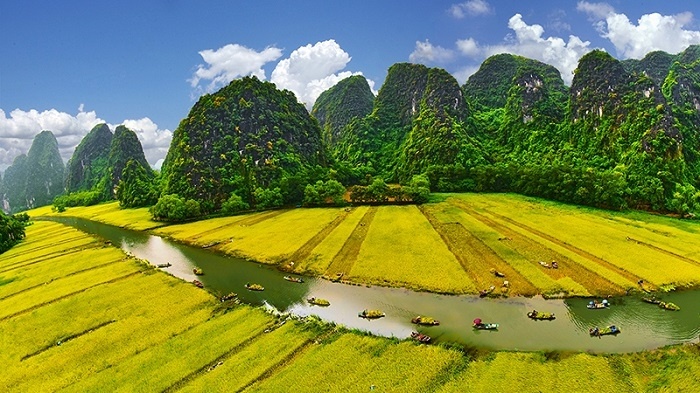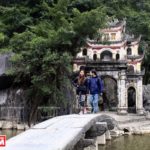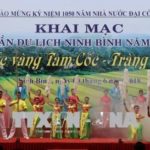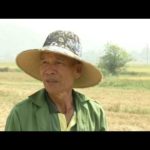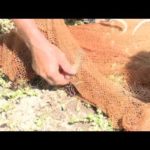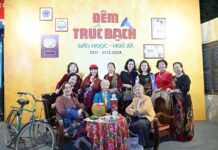The visit offered the group a unique experience of watching rice fields in Tam Coc, not by walking, motorbike or bicycle as usual, but by boat.
From Van Lam Wharf, Aunt Mo, a local rower, amazed Hanh and her friends with her master skills of rowing by feet. Mo said that the feet rowing skill was invented by locals to maintain strength as it is less exhausting than rowing by hand for a few hours.
Hanh found that some foreign visitors also enjoyed taking pictures of these skilful foot rowers.
Tam Coc is literally translated as “three caves” in Vietnamese. The caves were formed while Ngo Dong River flows through the mountain bed, Aunt Mo explained.
The first stop is Ca, which is the largest and longest cave, then goes the caves Hai and Ba. The air in the caves is cool. While looking up to the ceiling of the caves, tourists can see stalactites sparkling in the dark with many interesting shapes.
On the way out of the cave entrances, the ripening rice fields shimmer under the sunlight with limestone mountains standing in the background, creating a breath-taking scene for visitors.
Rice is grown in only one crop in the area, and it ripens between late May and early June. Aunt Mo shared that during the harvest season, villagers have to soak in the water and mud to harvest rice, and then load the ripe rice into small boats to take it home.
After the boat ride on a jade river amidst the fragrant of ripening rice, Hanh and her friends visited the ancient Bich Dong Pagoda, Thien Huong Cave and Tien Cave, which are all located in the core area of the UNESCO-recognised Trang An Cultural and Natural World Heritage Site.

